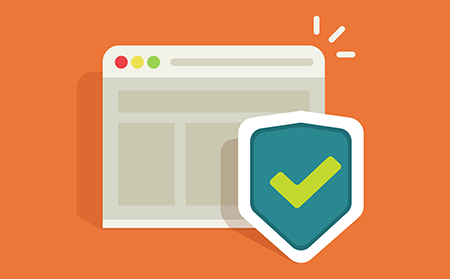Website Safety & Security Check For a Safer Cyber Experience
Most website developers prioritize building their website perfectly. That's very ideal. Though in reality, the website might be exposed to vulnerabilities - enticing to cyber criminals. You can't be creating a structure without some security measures. You have to make sure that you made plans to protect your website. Because in protecting, you're also saving yourself from big hacking problems. Need to check website security online for malware-free.
Even if it's profitable to incorporate a strong website security protection such as an SSL certificate and firewall, the website still has the risk of being hacked. These risks can affect your customers, relationship, integrity, and reputation. In 2015, ITRC Data Breach Reports reported that there are more than 177,866,236 personal records exposed via 780 data security breaches. That's alarming! In addition, you have a great chance of being a victim.

A Simple Reminder about Hackers
Hackers can attack anyone when they want to. As a matter of fact, there are at least 7 types of hackers. They don't favor anyone. Besides, smaller businesses still have information that they can exploit. This is why monitoring and scanning your overall website layers should be practiced.
How Website Security check online Works?
You got many options to check site security online. There are best website vulnerability scanners that you can use any time, but they aren't made all the same. You got to identify the specific requirements that you need in order to pick a website vulnerability scanner that suits you.
Given the proper tools and website security knowledge, you can be confident in fighting pesky hackers.
Check Website Security Online: Different Types of Vulnerabilities
All websites regardless of their size or type are targets. Hacking is not just about stealing data. Hackers want to create watering holes where they can hide malware to spread the malware to any visitors to that site. They also want to enlist those compromised sites in Distributed Denial of Service (DDoS) attacks on other sites. Any site can serve that function. With the number of threats and hacks faced by the online community, implementing a strong support and maintenance process within your organization to protect your website is imperative.
Website developers and designers are key components in creating a safer online community because they could implement these security processes at the very early stages of the website - when it is the “cleanest.” But many website creators are challenged with the lack of knowledge needed to keep up with the ever-evolving malware problem and the high operating cost of having an “in-house” cyber security staff. If you have limited resources or budget, below is a list of tasks to help protect your site from potential risks and help to start your security process:
Cross Site Scripting (XSS)
This is another form of injection vulnerability that can input sanitization failure. A hacker sets up your web application JavaScript tags on input. When this input is returned to the user unsanitized, the user's browser will carry it out. It can be as simple as creating a link and persuading a user to click it, or it can be something much more sinister. On page load the script runs and, for example, can be used to post your cookies to the hacker.
Injection Mistakes
If you want a smooth filter of untrusted input, injections flaws must be avoided at all cost. An injection flaw can let you pass unfiltered data to the SQL server, to the browser, to the LDAP server (LDAP injection), or anywhere else. These website layers can be used by a hacker to inject commands. This can result in loss of data and hack your own website. In fact, it can also infect other websites as well.
Outdated Security Configurations
Any responsible website security check online personnel will always make sure to personalize your security settings such as passwords and authentications. Perhaps, some people are still human to miss important things in their jobs. Some concrete scenarios are:
- They let the application run with debug enabled in production.
- They didn't change default keys and passwords.
- They left the directory listing enabled on the server, which leaks valuable information.
- They allow unnecessary services running on the machine.
- They operated an outdated software (think WordPress plugins, old PhpMyAdmin).
- They didn't fix some pop-up messages on error information.
A Lost Function Level Access Control
An authorization failure can also disrupt your website. It means that when a function is called on the server, proper authorization was not performed. A lot of times, website developers rely on the fact that the server side generated the UI. They think that the functionality that is not supplied by the server cannot be accessed by the client. It is not as easy as they thought, as a hacker can always fake requests to the “hidden” functionality and will not be prevented by the fact that the UI doesn't make this functionality easily accessible. Nothing can stop an attacker from discovering this functionality and abusing it if authorization is missing.
Exposing Sensitive Data
It's a huge failure for website security personnel - to not encrypt and not protect your sensitive data. Information (such as credit card details) and user passwords should never travel or be stored unencrypted, and passwords should always be hashed. And while it goes without saying that session IDs and sensitive data should not be traveling in the URLs. Moreover, sensitive cookies should have a secure flag on, this is very important and cannot be over-emphasized.
How To Check If A Website Is Safe





